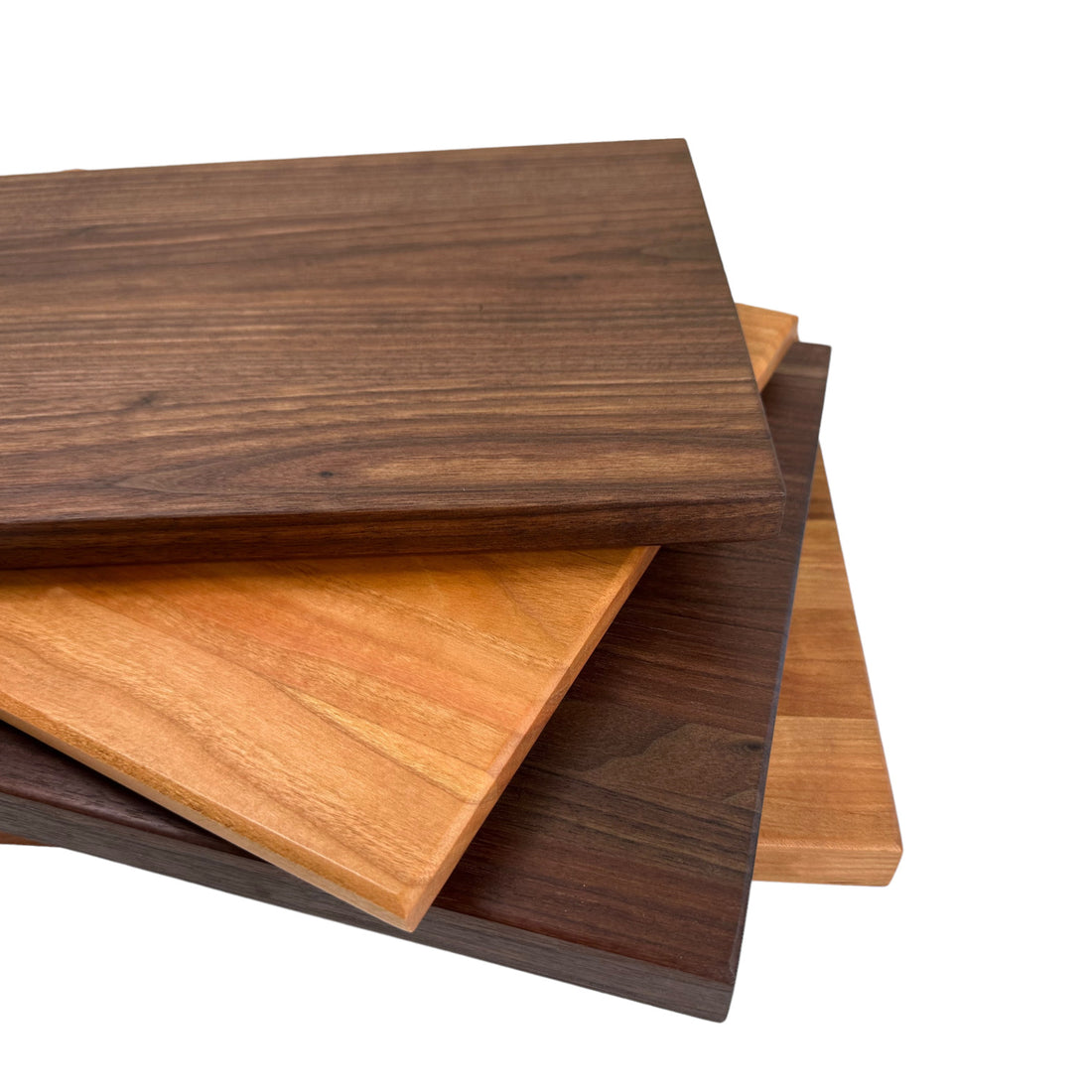If you’re looking to buy a new wooden cutting board, you’re probably wondering what is the best wood for a cutting board?
For enthusiasts of fine kitchenware, the choice of a cutting board is a crucial decision. It's not just about utility but about complementing your culinary space with elegance and functionality. In this quest, walnut, cherry, and maple emerge as the top contenders, each bringing unique benefits to your kitchen.
Key Considerations in Wood Selection for a Cutting Board
- Is the wood food-safe?
- Is it hard enough and durable?
- Is it easy to maintain?
- Does the wood color and grain figure fit your kitchen?
Food Safety: A Primary Concern When selecting wood, the safety aspect cannot be overstated. Walnut, cherry, and maple are excellent choices as they are known for being non-toxic and safe for food contact. They come from trees that bear edible fruits, nuts, or syrups, ensuring their suitability for kitchen use. It's essential to be cautious with exotic woods, as some might pose allergy or toxicity risks.
Balancing Hardness with Knife Care A cutting board must be durable yet kind to your knives. The Janka Hardness Scale helps identify the ideal balance. Woods rated between 900-1500 are perfect for cutting boards. Walnut and cherry score around 1,000, and maple varies between 1,000 - 1,500. This range offers durability without dulling your knives too quickly.
Ease of Maintenance: Key to Longevity Different woods require different maintenance levels. Maple, lighter in color, may stain more easily and needs regular oiling. Cherry, with its darker hue, is more resistant to staining and requires less frequent care. Walnut is the most resilient against stains and the easiest to maintain, making it a practical and stylish choice.
Aesthetic Appeal: Complementing Your Kitchen's Style The visual aspect of your cutting board is just as important. Maple's light color suits modern, minimalist kitchens, cherry adds warmth and is ideal for traditional settings, and walnut's rich, dark tone fits a wide range of kitchen designs.
In Conclusion Your choice of wood for a cutting board is a reflection of your culinary style and kitchen aesthetics. Walnut, cherry, and maple each offer unique advantages in terms of food safety, durability, maintenance, and visual appeal. Choose the one that aligns with your practical needs and personal taste, enhancing your cooking experience and kitchen décor.
We hope this article helped you better understand what the best type of wood for a cutting board is. If you're looking to add a new hand-crafted wooden cutting board to your kitchen, we offer endless options. Browse or collections here or contact us for a custom order.


